Many thanks to Evelyn Long for her get ready for fall article, Simplify Your Life with Proven Organization Strategies from Professional Organizers. Be sure to read Evelyn’s bio at the bottom.
– – – – – – – – – – – –

Resource: Casart S6 Japan Mural Customer Installation
A well-organized home looks, works and feels better to live in. Professional organizers agree that systems you can maintain beat one-time blitzes, so the focus here is smart limits, small wins and space-by-space plans that fit real life. Recent guidance from industry pros highlights simple, repeatable methods like deciding categories, micro-organizing routines and labeling tactics to make the most of your decluttering and organizing approach.

Resource: Casart S6 Japan Throw Blanket
Why Organizing is Essential
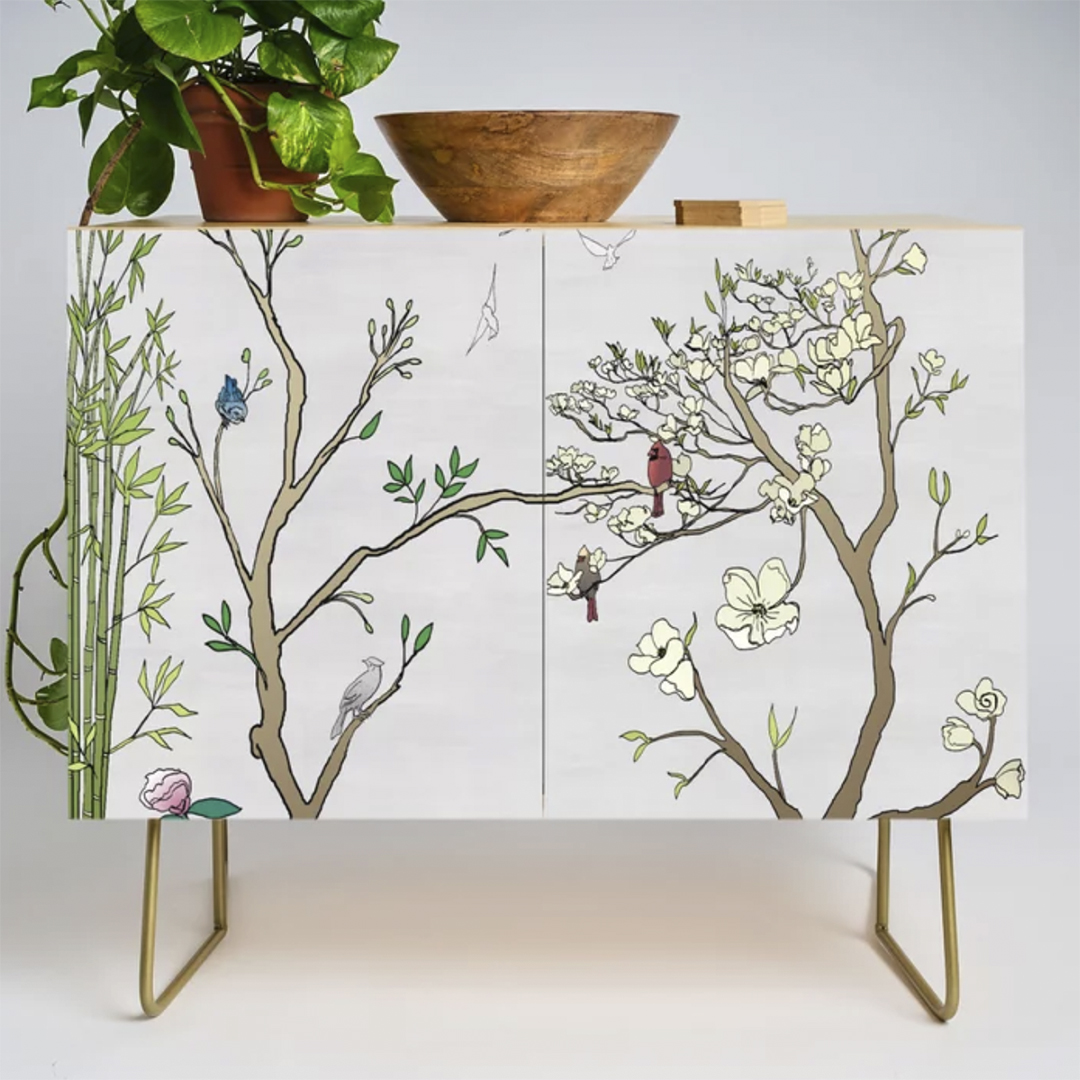
Rescource: Casart S6 Credenza Chinoiserie Colored Panels 1- 2 Silver Gray
Psychologists consistently link physical clutter to mental disorganization and stress. A 2023 study found that people with cluttered homes are indecisive and hesitant. By working on your indecision, you can become more organized and feel less overwhelmed when you see a section that needs organizing. Seeing a disorganized home can trigger a stress response, raising the stress hormone cortisol.
Clutter may influence how your brain perceives the world or information from what you see, potentially affecting your attention. It’s essentially what happens when you can’t see your car keys right in front of you because they’re on a table loaded with other visual items.
How to Organize Like a Pro
With the right approach, your home can become visually pleasing and functionally balanced. These organization strategies can help you define your space and the 300,000 possessions you likely have in your home. Professional organizers often emphasize starting small — a drawer, shelf or category — so you build momentum instead of getting overwhelmed. Organization is less about perfection and more about creating sustainable systems with these strategies.
1. Less is More
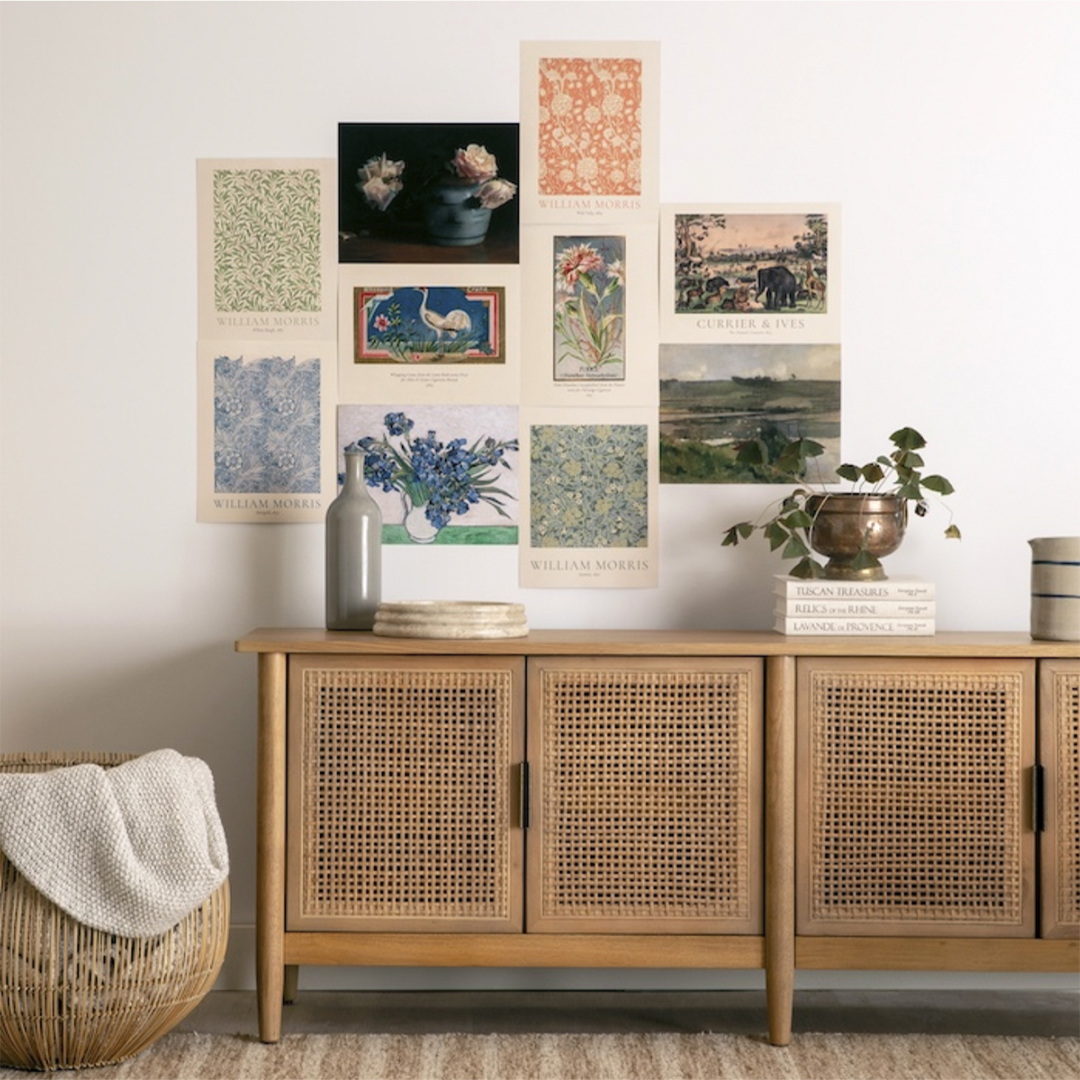
Resource: Society6 Vintage Artwork Set
While minimalism embraces this concept, it’s been around much longer. As organizational expert and author Shira Gill says, “I’ve found that by investing in fewer, better things, I actually save more and waste less.” So one of the first moves to make when tackling a space is to consider the things coming into your home.
The problem is often a perception that you must buy stuff to “fill a hole in the soul” instead of saving for quality items that last longer and don’t require frequent replacement. When you stop filling your rooms with stuff you don’t need and reduce the influx of clutter, you can begin to organize what you already have.
2. Focus on Functionality
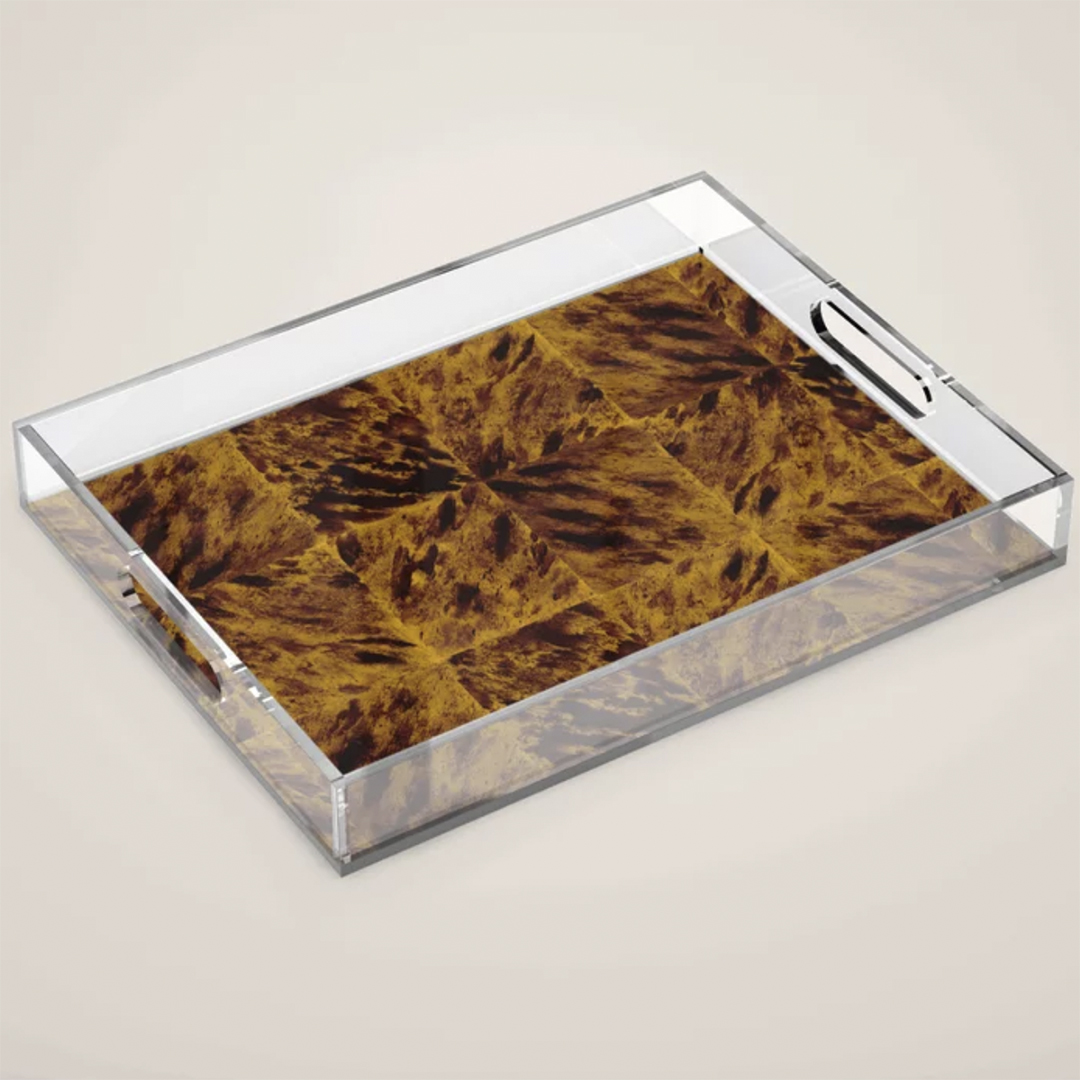
Resource: Casart S6 – Tortoiseshell 2 Natural Acrylic Tray
“Being organized has less to do with the way an environment looks than how effectively it functions,” says Julie Morgenstern’s New York Times-bestselling guide. A room that looks stylish but doesn’t support your daily routine will quickly fall back into chaos. Instead of aiming for Pinterest perfection, think about how you can use each space.
How do you control where you drop your keys, how you meal prep and where the kids do homework? Organizing around habits ensures the systems you set up actually stick. Something as simple as putting hooks by the door or drawer inserts in a kitchen can transform everyday stress points into effortless routines.
3. Assign Rank to Mementos

Resource: Society6 Relax It’s Only Chaos
Peter Walsh — international clutter expert and writer — says you should “establish a hierarchy of mementos and collectibles.” Not every keepsake holds equal weight. Start by separating truly meaningful items like family heirlooms and irreplaceable photos from casual trinkets that simply take up space.
Once you’ve ranked them, display the most important pieces where you’ll enjoy them daily, and store the rest in labeled containers. With this organization strategy, memories are honored without overwhelming your shelves, and you’re less likely to feel guilty about letting go of items that no longer spark connection.
4. Organize as You Store
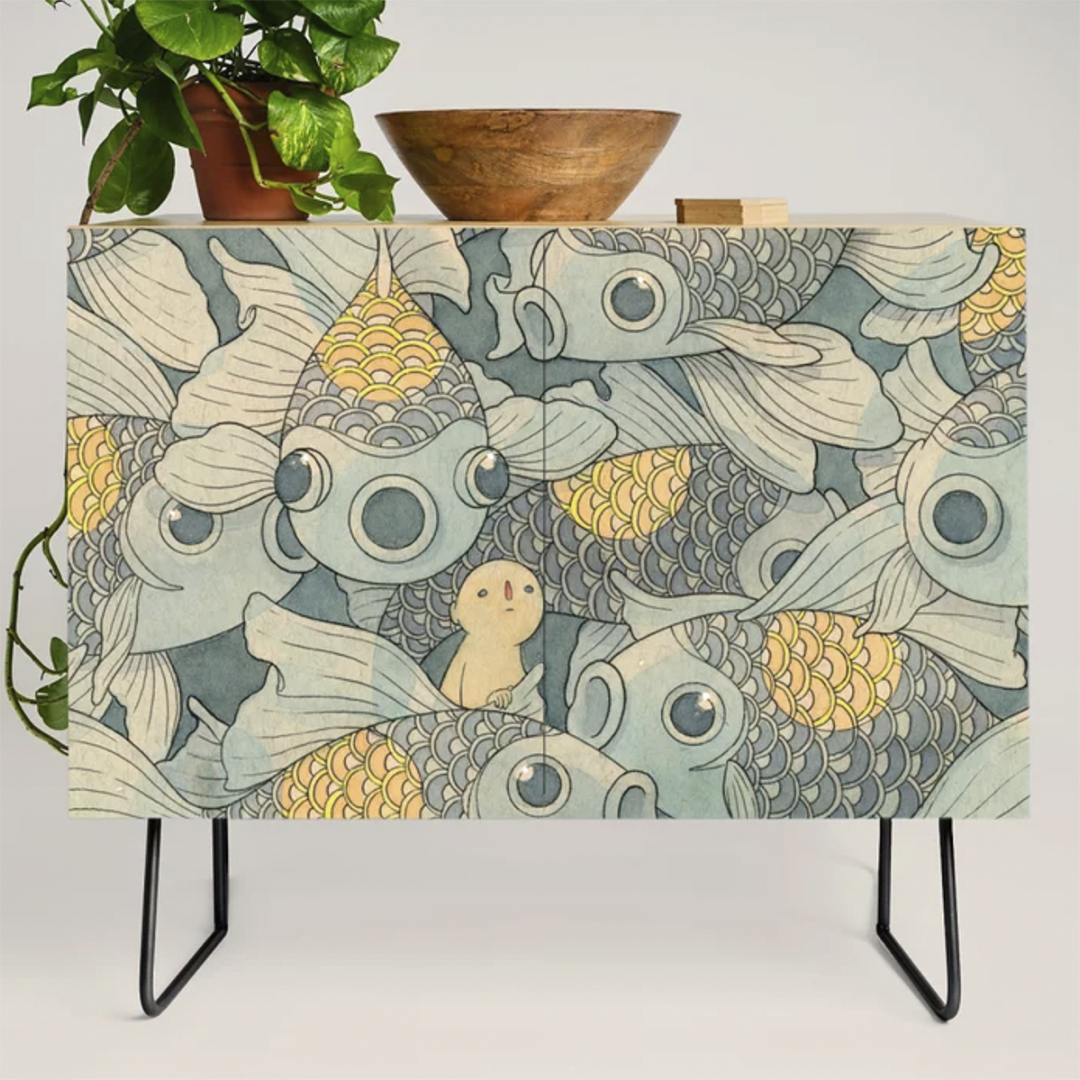
Resource: Society6 Fish Tank Credenza
Storage has moved beyond a few cardboard boxes with magic marker labels scribbled on them. Today, technology can help you find what you pack away in a flash. More and more homes are embracing smart devices, and by 2028, around 103.15 million U.S. homes will use them, making access to your home and the things you store around your home more simple.
You can also tag storage bins with near field communication stickers linked to digital inventory on your phone. Simply scan a sticker, and your smart system will tell you what it is and where it goes. Your belongings become neatly stored and instantly accessible.
5. Create Good Habits
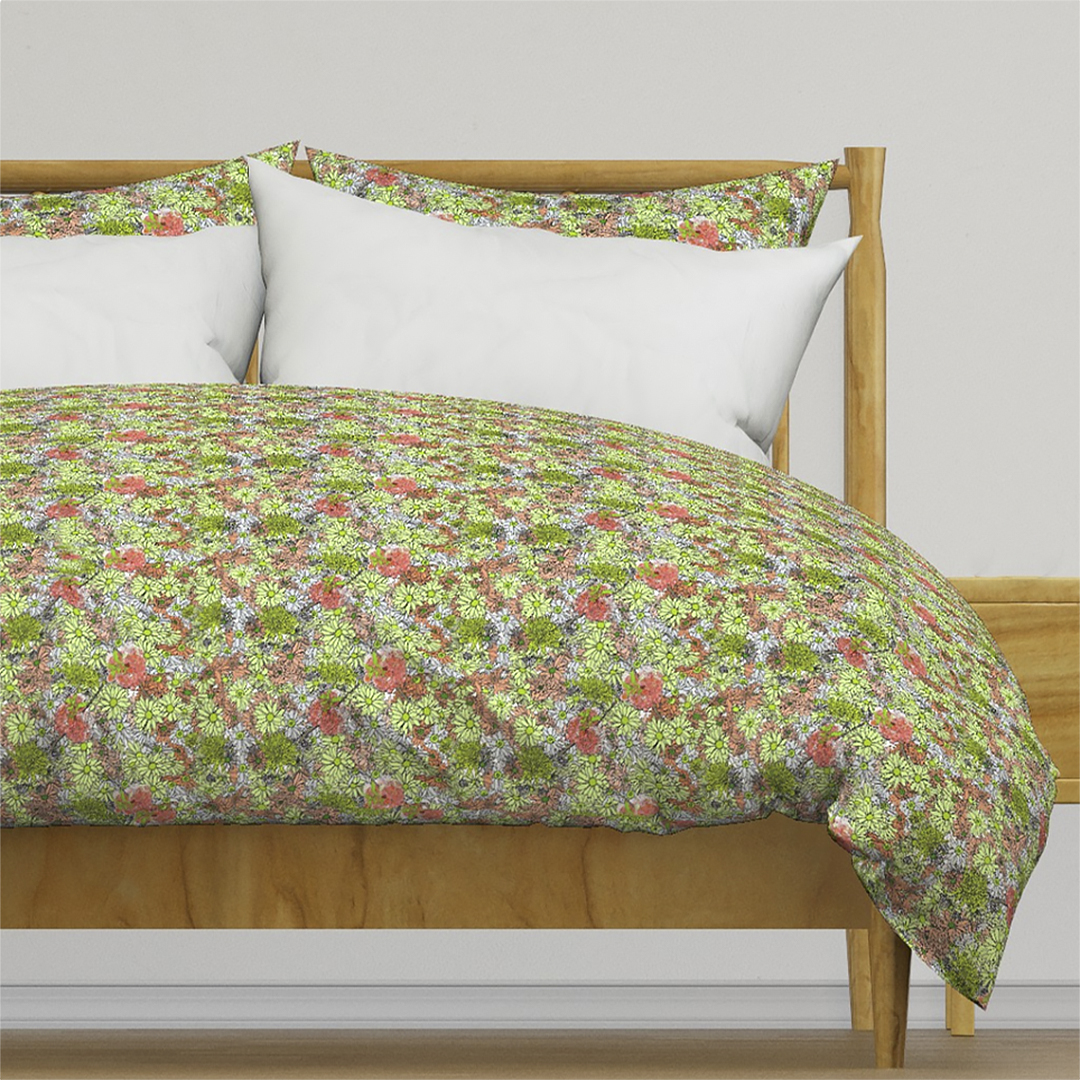
Resource: Casart Spoonflower Duvet Cover Flower Power Multicolored Green Orange
While the first few steps may be deciding what to box, bag or basket, and where to keep things or what things to throw out, your habits will keep your space functional and neat. As the team from Horderly says, “A space works when ‘everyone in the home has mastered the new systems, formed lasting habits, and developed a mindfulness around what comes into the space.’”
Simple rituals make the biggest difference — five minutes nightly to reset where you return items to their homes or always taking something with you that doesn’t belong in a space when you leave the room. Over time, these small organization strategies become second nature habits, preventing clutter from building up and keeping your systems working long after the initial clean-out.
8. Invest in a Suitable System

Resource: Casart Spoonflower Wallpaper Flower Power Multicolored Green Orange
Whatever your organizational needs, Martha from Well Arranged Home suggests that “systems are designed to be easy to maintain.” Whether you outfit your home with hidden containers or drawers, your chosen system should be easy to incorporate into your daily life.
A strong system of storage accessories like trays, wine coolers, totes and bags adapts to your lifestyle — modular bins that stack neatly in a garage, drawer inserts that separate utensils in the kitchen or labeled baskets in a linen closet. When your storage setup works with how you naturally use a space, you spend less energy maintaining it and more time enjoying a calm and intentional home.

Resource: Casart Decor Light Blue / White Faux Panels Design
Bringing It All Together

Resource: Society6 Charicatures Collection
An organized home doesn’t just look beautiful — it shapes how you feel and function daily. Set limits, focus on functionality, assign value to what you keep and weave in small habits to create helpful routines.
Professional organizers believe you don’t need complicated systems. Organization strategies just have to be sustainable. Whether that means scanning a QR code to find holiday lights, teaching kids to tidy with bins they can manage or simply curating fewer shelf-level items, the result is the same — less decision fatigue and more peace of mind. With every drawer, closet or shelf you reset, you remove clutter and build a home that supports the life you want.
_ _ _ _ _ _ _ _ _ _ _ _ _ _ _
Additional posts & resources:
- Bring Peace & Calmness to Your Home
- How Does Interior Design Affect Your Mental Health
- 10 Ideas to Transform Your Space
- We’re Falling for These 6 Trends That Create a Warm & Inviting Space
- Home Resolutions for 2025
Many thanks to Evelyn for her insightful article on ways to create a pinterest dorm on a budget.

About the author:
Evelyn Long is an interior design expert who uses emerging trends to help every homeowner discover their perfect style. Her work, regularly published in the National Association of Realtors, I+S, and DecorMatters, offers readers actionable tips for blending the latest looks with their personal taste. As editor in chief of Renovated Magazine, Evelyn is committed to making great design accessible and tailored to every individual.




Leave a Reply